Another fashion season draws to a close and Grace Coddington is drawing her notes. Sitting in her front row seat, with Anna Wintour by her side, Grace is instantly recognisable for her frizzed out mane of red hair, which has been her signature look since the sixties and today is just as iconic as Anna’s sharp bob. American Vogue‘s legendary Creative Director knows that you have to walk apart from the crowd to really make your mark, and if there’s anyone to inspire tomorrow’s future fashion stylists, editors and entrepreneurs, it’s her.
Born Pamela Rosalind Grace Coddington in 1941, Grace’s childhood was far removed from the fashion industry she has since made her home. Grace grew up in the Tre-Arddur Bay Hotel her parents ran on the remote island of Anglesey, off the coast of Wales. She went to school in the local convent with 60 other shorter Welsh girls, but was always dreaming of the bright lights of the big city. Grace flew the nest aged 18 and caught the bus to London with a copy of Vogue in her pocket and a dream of becoming a model. In London, a horrific car accident put a halt to her dreams and forced her to endure two years of reconstructive surgery to her face. But, on recovery she re-entered the fashion industry and together with Twiggy, Celia Hammond and Jean Shrimpton went on to become one of the most successful models of the sixties. In 1968, Grace stepped to the other side of the camera to became Junior Fashion Editor of British Vogue, quickly working her way up to Fashion Director. She left for New York in 1987 to work with Calvin Klein before realising her heart lay in magazines and joining Anna Wintour at American Vogue in 1988. A position she has held ever since. Grace might have remained fashion’s best-kept secret were it not for The September Issue, R.J. Cutler’s 2009 documentary that catapulted the publicity-shy Grace into a celebrity overnight. “The first I heard of The September Issue, (the only reason anyone has ever heard of me) was when Anna Wintour called me into her office at Vogue to tell me about it,” Grace writes in her Memoirs. “I’m always surprised that people who’ve seen the movie respond to me in such a positive manner. Maybe it’s because I come across on-screen as so emotional… perhaps they are always going to react to someone who seems so spontaneous. Or someone who dares talk back to her boss like no one else does at the magazine, as I have done and probably will again.” Or perhaps, it is because Grace represents the hero in all of us, an uncompromising creative, with a true belief in fashion as art that’s lovingly translated into everything she does. Needless to say, if Grace was popular within the fashion industry before the film, after its release her popularity went stratospheric. “I found groups of people regularly gathered in front of my apartment in Chelsea,” she recalls. “Fashion freaks, gays, straights, young, old, a whole mixture… I felt like The Beatles!”

My earliest memory of Grace is meeting her in then editor Beatrice Miller’s office on the 5th floor of Vogue House, Hanover Square, sometime in 1972. I started working as Art Director three days a week at British Vogue the same month as Liz Tilberis started. I was always in awe of Grace. She was the avant-garde Fashion Editor who always did the most exciting stories, using the best models, often in exotic locations and laced with the most wonderful fairytale narratives. She is also one of the reasons I started i-D.
“For me, one of the most important aspects of my work is to give people something to dream about,” Grace concludes, “just as I used to dream all those years ago as a child looking at beautiful photographs.” Now in her seventies, Grace is enjoying her position as one of the most respected figures in the fashion industry. She is loved by fashion stars old and new, as you can see from the quotes we have collected here. Grace and I had coffee together during Paris Fashion Week to celebrate the launch of the book and her remarkable, inspiring career.
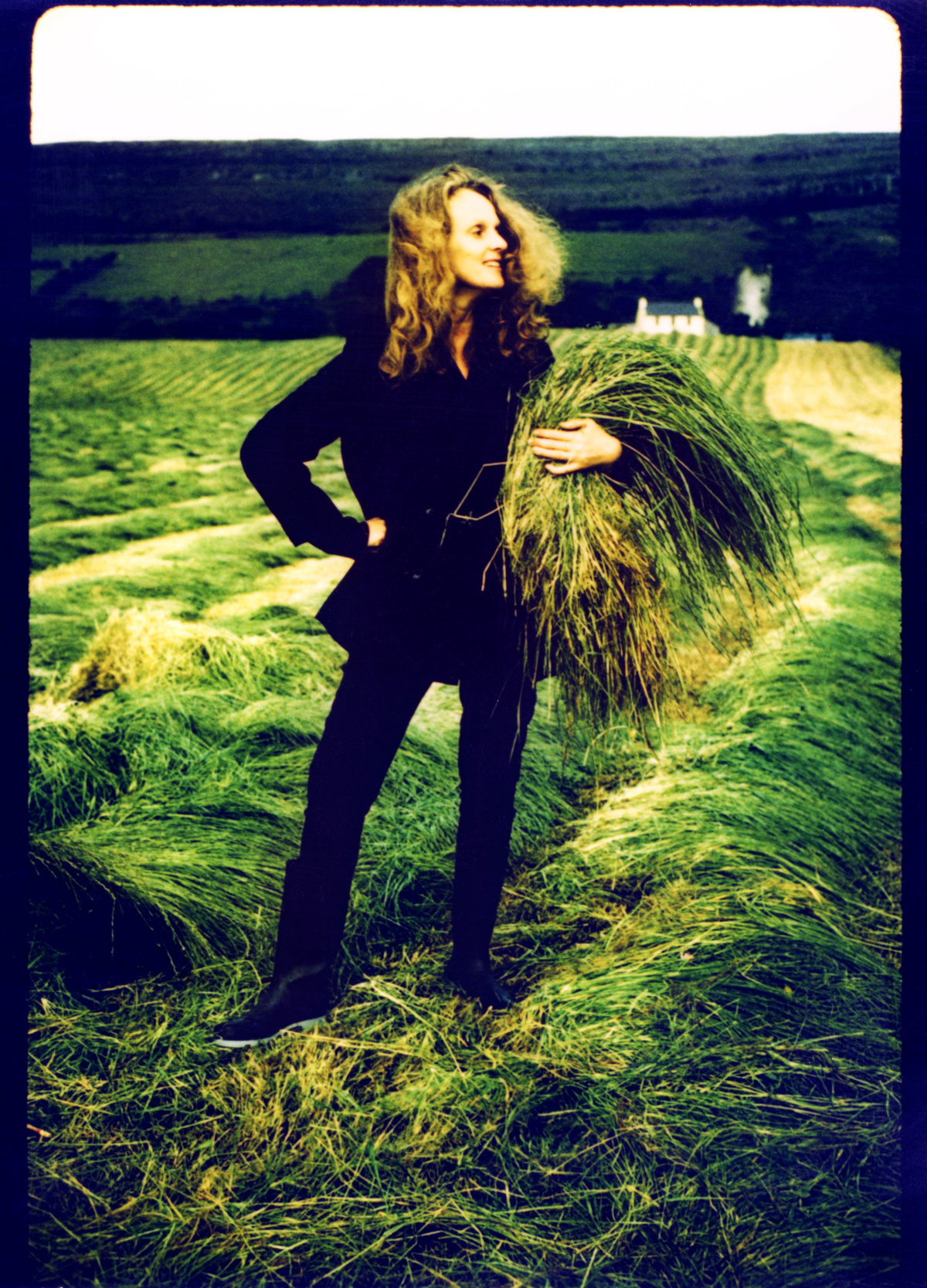
When you look back at your time at British Vogue, what are your favourite memories?
When I look back, I realise I had a very easy time. Firstly, I only did one shoot every six weeks or so. There were no commercial hang-ups either. You could shoot anything you liked. I went to China once for British Vogue and thought, ‘Hmmm… maybe I won’t shoot all these suitcases of clothes I’ve brought with me after all, I want to shoot everybody in uniform.’ You could never do that at British Vogue today. You probably couldn’t even do it at i-D! You have to keep your eyes open, because life is real, and credits are real, and that’s what pays your wages at the end of the day. But, back then, you didn’t have to be realistic, you could be totally spontaneous. It was amazing.
You were always fantastic at discovering new talent.
It was my pleasure to work with young photographers back then. It’s not so much now because time is money and it’s such a responsibility on my shoulders. If I do push for someone new to shoot at , and I win, then I have a heavy voice in my ear going, ‘Shit, this had better fucking work, because if it doesn’t you’ve just lost one hundred thousand dollars!’
Who taught you how to be a fashion editor?
I don’t know. It’s all to do with the way you see things. Clare Rendlesham [Fashion Editor, Vogue] was someone I watched very closely. I think she was an amazing editor. As was Sheila Wetton [Fashion Editor, Vogue]. She was a much older lady, but I loved her attitude to life. I always think I’m Sheila Wetton reincarnated. I love cats, I swear like a trooper and I used to be a model and so did she. I think she was extraordinary.

How long did you model for?
I modelled for nine years, but very on and off because I had a car crash in 1960, and I had only started modelling in 1959.
How did you get involved with fashion?
I’m very lucky. I’ve fallen into everything that has ever happened to me in life. I lived in North Wales, Anglesey and I knew I couldn’t spend the rest of my life there. I loved it, but birds have to jump out of their nests at some point. So I jumped on a train and came to London. I worked as a waitress for a friend of mine at a coffee bar called Stockpot, on Basil Street. I used to read Vogue – I know this sounds like an advert for Vogue, but seriously I used to read it – which was difficult in Wales in the 50s. In Vogue I saw an advert saying, ‘You can be a top model too.’ So I applied and went and met Cherry Marshall [London’s top model agent at the time] and I did a modelling course in the evenings with her.
Did you used to walk around with books on your head for better posture?
No, no I didn’t. Cherry Marshall’s was largely a deportment class that all young ladies were sent to, so my mother was happy. She never asked questions. I said, ‘I’m going to London.’ She said, ‘Oh, that’s fine.’ My sister got married at eighteen and my mum was like, ‘Oh, ok.’ So off I went to London. I went to this model course in the evenings and then worked in Stockpot during the day. Then one day someone at Stockpot said, ‘Hey, you should enter the model competition.’ So we sent my application off and I had to go to model school to get my model card.

Do you still have your first model card?
I do, they’re so funny! I had bunches and I’m wearing black stockings with a big sweater.
What colour was your hair?
My hair was red. But it wasn’t as red as this.
So where did the name ‘Grace Coddington’ come from?
Grace is my grandmother’s name. I was actually called Pamela, and my friend at Stockpot was called Panchita. Everybody shortened her name to ‘Pan’ and mine to ‘Pam’. So she said, ‘You’ll have to change your name, people are going to confuse us.’ So I changed it to my grandmother’s name, and entered the model competition as Grace Coddington. Through that I met Brian Duffy, Terence Donavan and David Bailey… It was the wild 60s.
What were your first impressions on meeting Bailey?
I don’t remember the first time I met Bailey, but I do remember meeting Terence Donavan very clearly. He had this little studio in Knightsbridge, in Yeoman’s Row, opposite the Bunch of Grapes. I walked in with my book and he had his feet up on the desk like this [crosses arms]. He said ‘Hello’ and we started chatting. Then he said ‘I got married today.’ I said, ‘You did? What are you doing in the studio then?’ And he said, ‘Yeah, I got married today. But, you know, whatever…’ I left there thinking, ‘Oh my god, this is the world of modelling, how incredible!’
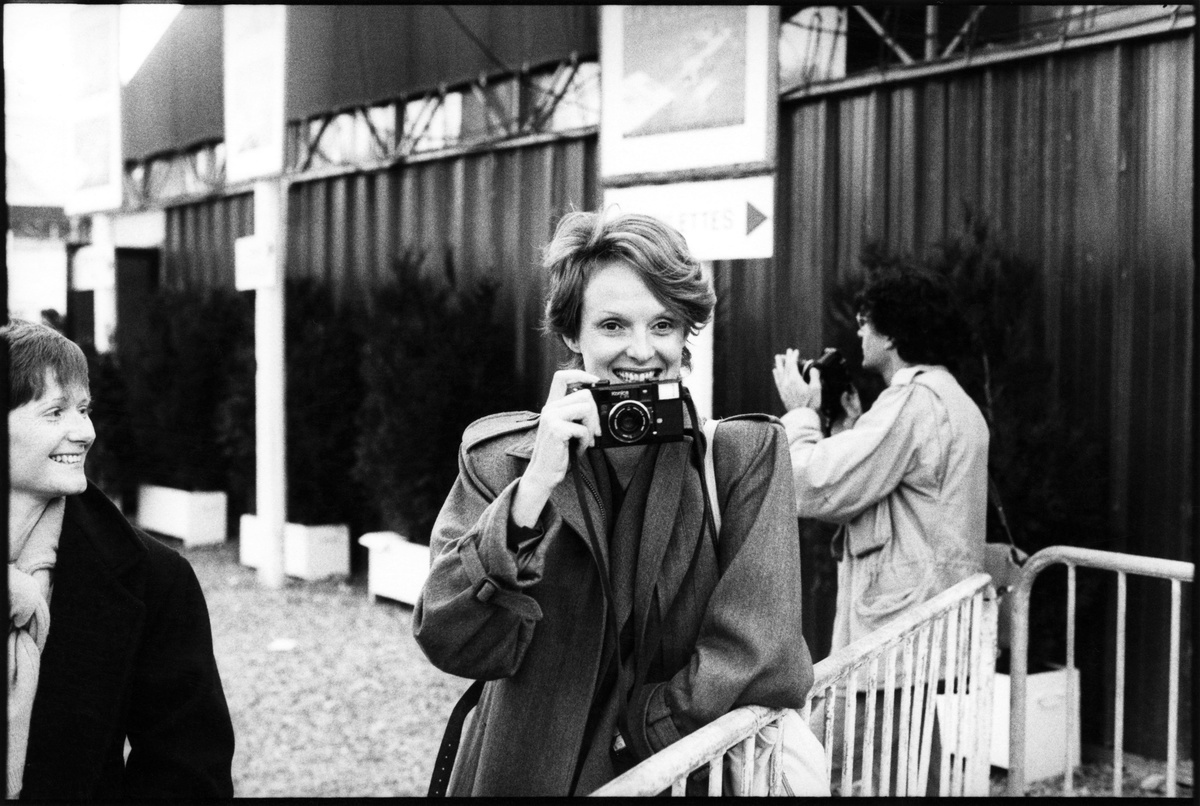
That’s so funny.
I couldn’t understand a word he said because of his cockney accent. He would just talk and talk. Then through him I met everybody else. Bailey was just starting out then. He may have been working at Studio 5 with Norman Eales. But Vogue soon scooped him up and loved him. He was so cute looking. Everyone would always say, ‘Oh, he’s so cute!’ Which he was.
Did you know anything about his reputation at the time?
Well, of course. David Bailey makes love daily.
I’ve heard a lot about his reputation in the studios…
Oh yes. He was outrageous. I mean, he really was outrageous. I don’t know what he was like when he was with Jean [Shrimpton]. I started working with him as a model after he left Jean. When he was with Jean, he pretty much only ever shot Jean.
Norman Parkinson often had a favourite model he would work with too.
My first picture as a model was done with Parkinson.
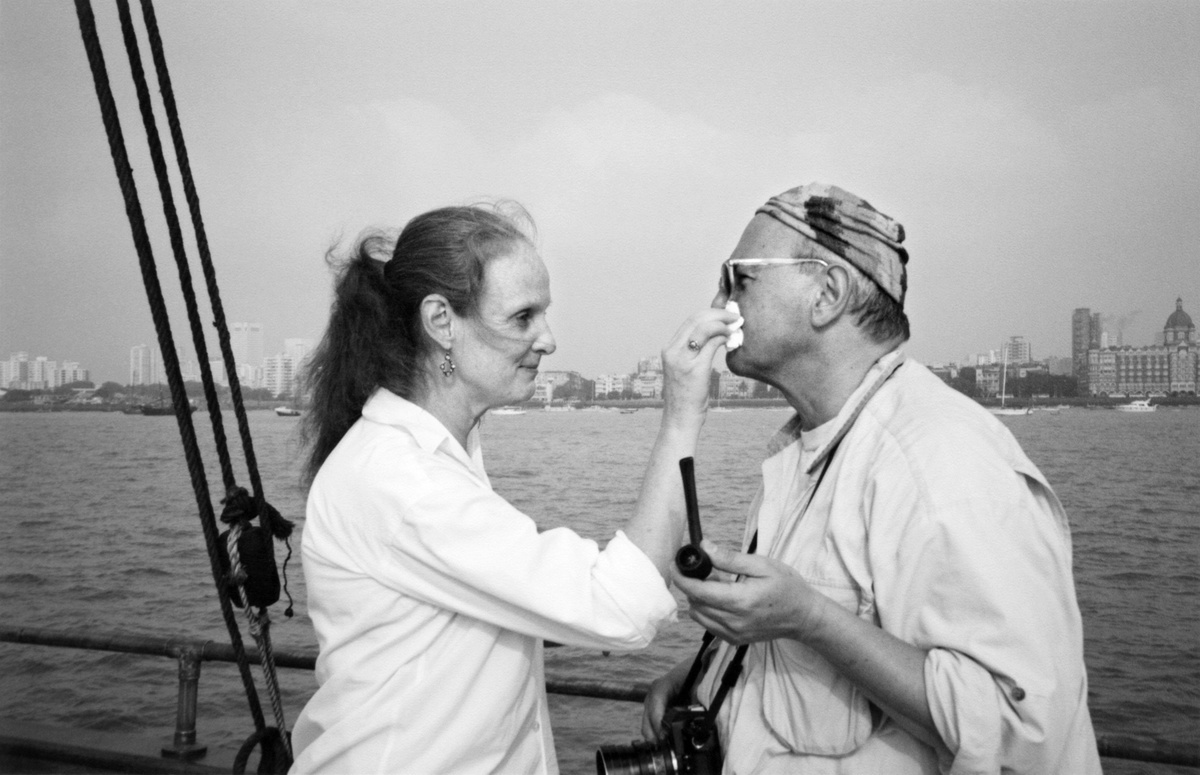
What were your first impressions of him? Was he scary?
He wasn’t scary at all. He was enchanting. He was wonderful. He was like a father figure. ‘My dear…’ he always used to say. My very first picture was nude. One day this male model who worked with Parkinson all the time came in to Stockpot. He was very good-looking, really lovely. Anyway Parkinson said to him, ‘Anytime you see a pretty girl, send her my way.’ So when he saw me he said, ‘You should go and meet Parkinson.’ I was so excited! When I was living in Wales, Parkinson was the one photographer who really stood out in Vogue. So I went off to meet him with my pictures. He didn’t want to see the pictures. He just wanted to see me. He told me to do a twirl. Then asked me whether I’d do this picture for him at the weekend. It’s a nude. I was so excited I didn’t really hear the word ‘nude’. I just thought a picture with Parkinson, yes! I didn’t have a problem with being nude at all. I don’t even know what it was for. Shortly before he died, he sent me a note saying, ‘I came across your nude pictures and I’d like to send you a print.’ Then he died, so I never received them.
Did you ever manage to track them down?
I asked a girl at Vogue to see if she could find them. She tracked down some contact sheets through the Hamilton Gallery. I think his archive is in a bit of a mess. When I was looking for pictures to include in my big photo book, Grace: Thirty Years of Fashion at Vogue, there was this one picture we took in the Seychelles and I couldn’t find it anywhere. They just sent me a whole box full of crumpled up colour transparencies and I found it amongst them.
You did some great trips with Parkinson.
I did, I went to Jamaica a couple of times and Barbados, Portugal and Russia too.

Who was the girl that you went to Barbados with?
Apollonia Van Ravenstein. She was crazy. She’s still around. She lives somewhere in up-state New York. She occasionally turns up for the Dries Van Noten show. She was one of those crazy characters, who was friends with everyone.
When did you have your famous Vidal Sassoon haircut [The Five-Point Cut]?
1964. I was working with Sassoon before that. In fact, I was supposed to go to New York with him when he took his trip there. But because I had my car crash I couldn’t go. It was a radical haircut. Sassoon developed it on me. I was his model.
Our granddaughter has red hair like yours. They love red hair in America.
Anna hates red hair. I’m always trying to put red hair on models. I really like strong colour hair, it doesn’t matter what, it could even be green! The only hair colour I don’t like is blonde. I find it boring. I like red heads, as they usually have very pale skin, but that’s not Anna’s ideal look. She likes people that are healthy looking and she likes blondes because that’s the American dream. But I suit red hair. My personality goes with it.

When did you stop modelling and start styling?
I had been modelling for nearly nine years when Clare Rendlesham [then Fashion Editor at Vogue] said to me, ‘You’re a bit old, aren’t you? Why don’t you come and work with me?’
Was Beatrix Miller editing Queen at that time?
No, Bea was already at Vogue by then. Clare asked me to go to Vogue a few times. She started noticing that the girls were getting younger and younger, while I was now in my mid-to-late 20s. Twiggy came along and, you know what, I started thinking about it. Then Marit Allen [Editor of the ‘Young Ideas’ section of Vogue] called and said I really think you should come and work at Vogue, and I thought it was a better fit. So I went and had an interview over lunch with Bea. It must have been around 1967. I started in January 1968. I think Bea is an amazing woman.
She is amazing.
Unbelieveable. She has an eye, an ear and a nose for talent. She gives people the freedom to develop their talent. She did for me anyway. She never said ‘No, don’t do that’. She developed a lot of people in a vey clever way.

Oh, incredibly. I just found that most people were scared of her. We broke the rules a lot when we worked together at Vogue. Do you remember when we did the full-length cover with Manolo Blahnik and Anjelica Huston [photographed by David Bailey, 1974]? Then there was the jelly cover [February 1977], shot by Willie Christie too…
When we worked at British Vogue together, I always thought you loathed me! We were always at loggerheads about something or other. It’s a known fact that the art department and the fashion department are always fighting. No matter how much you love the art director, you’ll always be like, ‘Why did you use that picture instead of the other one?’ That was very early on in my life, but it feels like yesterday. Yes, Bea was totally up for breaking the rules. She came from Queen magazine, where they always broke the rules. They turned the magazine upside down, literally, that was what she was known for.
What about Vogue‘s Australian cover [January 1975]?
That was upside down too, yes.
Then there was another cover that was totally out-of-focus.
If you look at them now, they’re all out of focus! Because they were all shot on grainy films, it makes them look out of focus, which I loved. It’s funny. I did a shoot on Ku Khan for British Vogue and it was so fuzzy you could hardly see any of it. It was absolutely beautiful, really fresh. I remember the models were all wearing pastel dresses. I still look at it and laugh because the pictures would never run in any magazine now. Not even in your magazine probably!
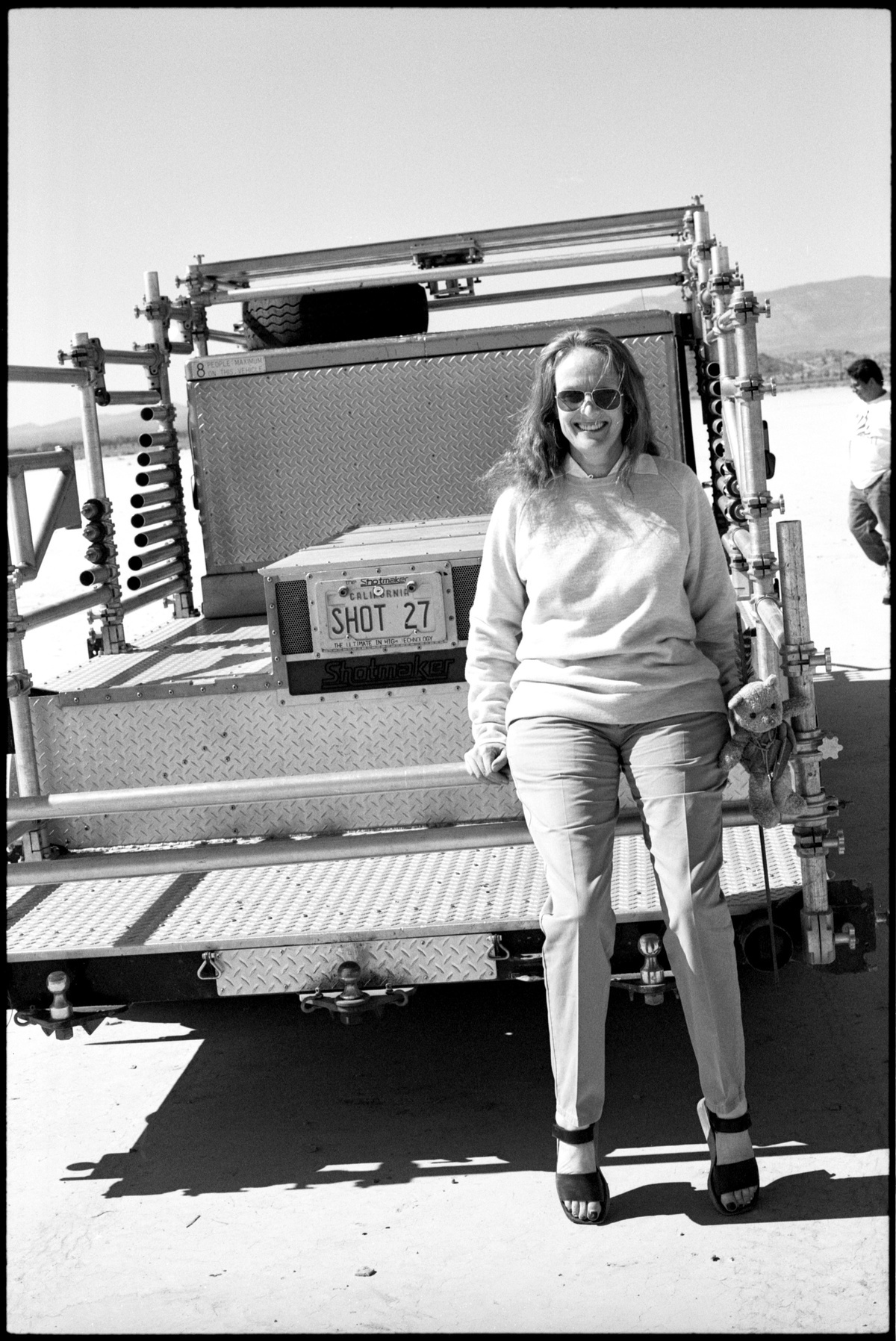
Bea always used to let mistakes go through, it was incredible.
That was Vogue’s strength. It had an amazing reputation, everywhere, even in America. I was always so surprised that people knew what we did. Especially when you were talking to the Americans.
What made you come to America?
A lot of things really, but timing had a lot to do with it. I came in 1987. It was a good time for me. My sister’s kid who I raised after she died, was all grown up. My mother had died a couple of years back so I didn’t have to stay close to England, but mostly because I was having a thing with Didier [Malige] and he lived in New York. It was a changing point when Anna arrived at British Vogue. She shook things up. It’s so hard when you’re sitting in a chair that you’re so used to working in, and you look around and while everything looks the same, it’s a completely different place.
So what did you do?
Calvin Klein had been asking me endlessly to work with him, so I thought you know what, if I don’t go now, I will never go. I really loved America. I was always shooting here. I was the first one to come and cover all of the collections. None of the other European editors came at that point. It was really exciting. It was such a different point-of-view. Even now when I drive in from the airport I get that feeling, I just go ‘Whooooosh!’ The energy you feel compared to England is unbelievable. England was draining me. Nobody wants to do anything there. I was becoming like that too. Anna had such a tough time when she went to British Vogue. We would all be like, ‘Oh, we can’t do this’, or, ‘We can’t do that.’ It was always negative, negative, negative. She must have been very frustrated. I took a step back and said to myself, ‘You have an offer from Calvin Klein with tons of money to go and live in America,’ and Didier was there. SoI took a very deep breath and accepted it. I remember driving up the Fulham Road away from my house to the airport thinking, ‘This is it…’

And you never looked back?
No, I never looked back. I kept my flat for about nine months. I rented it out. But then I thought even if I did go back, I wouldn’t want to go back to the same flat. So I sold it.
How long did you work with Calvin Klein for?
A year and a half, but 7th Avenue isn’t for me. It’s a different thing. You’re in the studio morning, noon and night. I knew Calvin and I loved his designs when Zack Carr was there. He was a really brilliant designer and he was a close friend of mine. He was good friends with Bruce Weber, so I started working with Bruce a lot. I got the whole American vibe through Bruce really. It seemed like a great moment to come to New York. But when I got to Calvin, Zack was no longer there, it was a team of sweet people, but they just weren’t talented like Zack. When Zack came back a little while later I think he was a bit pissed off to find me in charge. He was originally the Design Director. I’m not a bossy boss. I always work besides people, rather than be like, ‘I’m the boss and you have to do what you are told.’ And I’m not a designer. It was around the time Anna was made Editor of American Vogue. I was seeing her regularly, going for dinner with her and her husband David and she kept asking me, ‘How’s it going? How’s it going?’ And I was like, ‘Fine, fine,’ you know. Then as soon as I heard she’d been made editor I called her and asked her if she would have me back. She said she was starting on Monday and suggested I start with her. No fussing around. She simply said, ‘Meet me tonight,’ we met and half an hour later I had the job.
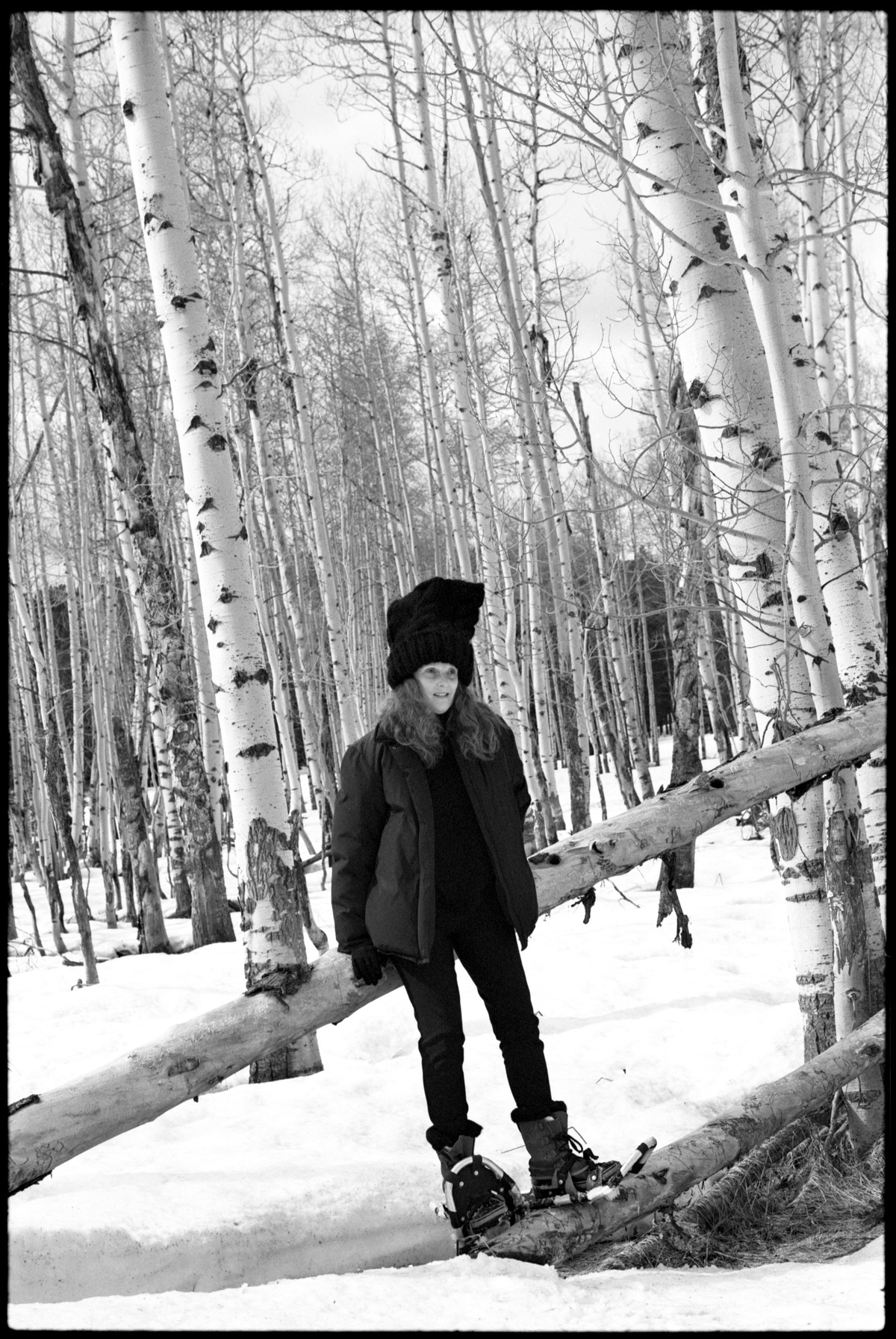
What were your first impressions on joining American Vogue?
That everybody dressed the same! Everybody was wearing Chanel jackets. Well, you had to fit in…
How often do you shoot today?
I try not to shoot too much back to back because I don’t like it. Nowadays, it is difficult to do your job properly as there’s just no time.
How many people work with you on a shoot today?
Probably between 25 to 30 people. When I started out it just used to be me, the model, the photographer, his assistant and maybe my assistant too, that was the maximum.
What makes a Grace Coddington shoot?
To quote Michael Roberts: English gardens, flowers, trees, topiary, groups, Paris couture, chateaux, even bigger groups, wagon trains, teepees, summer camp frolicks, innocence, crazy hair, long skirts, historical tableaux, happy families, buckets of nostalgia and lovely horizons.
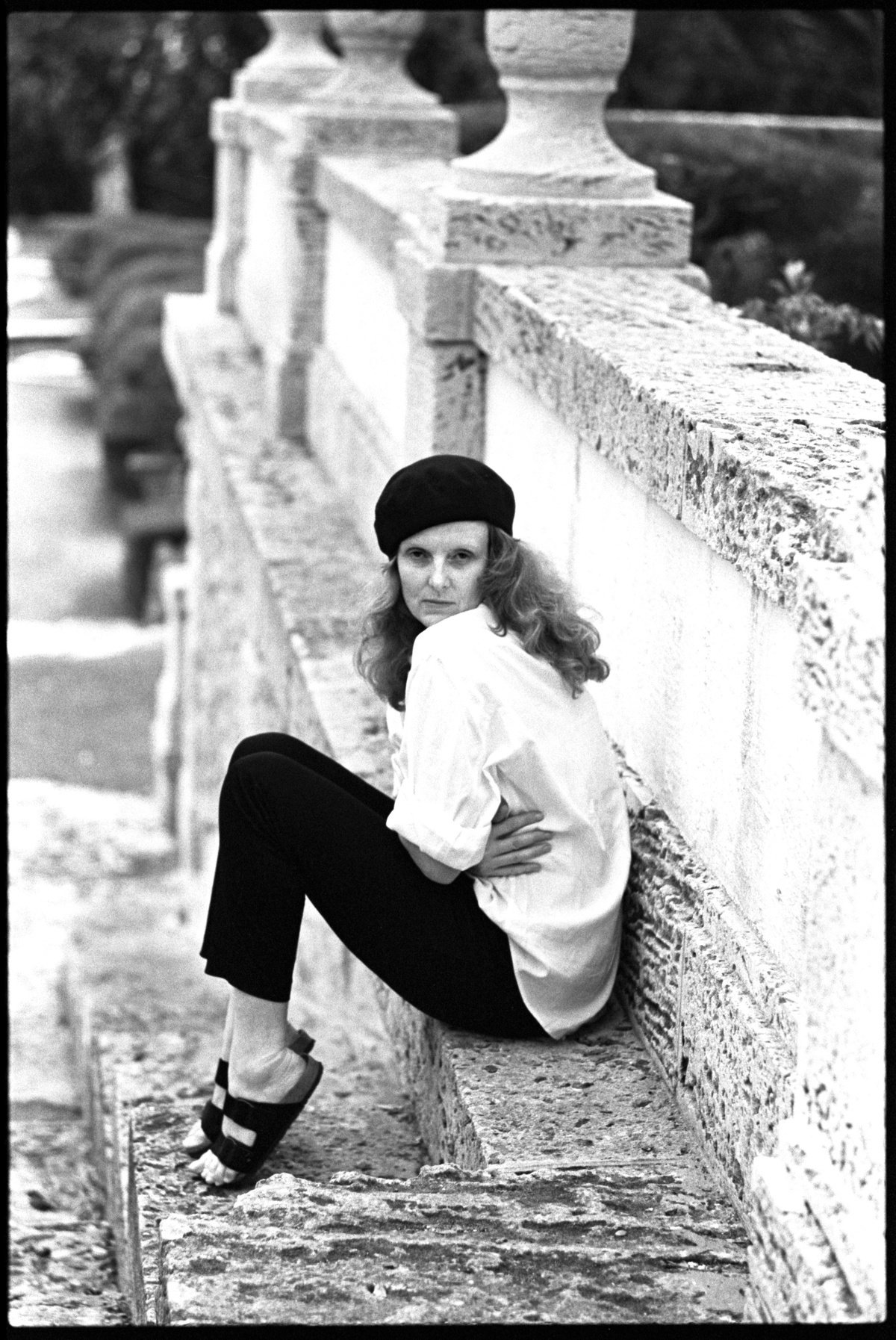
What makes a good photographer for you?
That is such a broad question. We would have to go to dinner together to fully discuss it!
What advice would you give an assistant who is about to leave you?
Go, but realise it’s going to be fucking hard. It will be really really tough and it will take a while until you find your feet. Don’t think you can get there in five minutes. It took me 50 years!
You’ve mentored a lot of people over the years…
Yes, and a lot of my assistants have turned out to be really good editors, like Lucinda Chambers at British Vogue.
And Edward Enninful too [i-D’s Consultant Fashion Director].
Yes, Edward, but he wasn’t my assistant.
Yes, but he looks up to you.
I love Edward, I miss him.
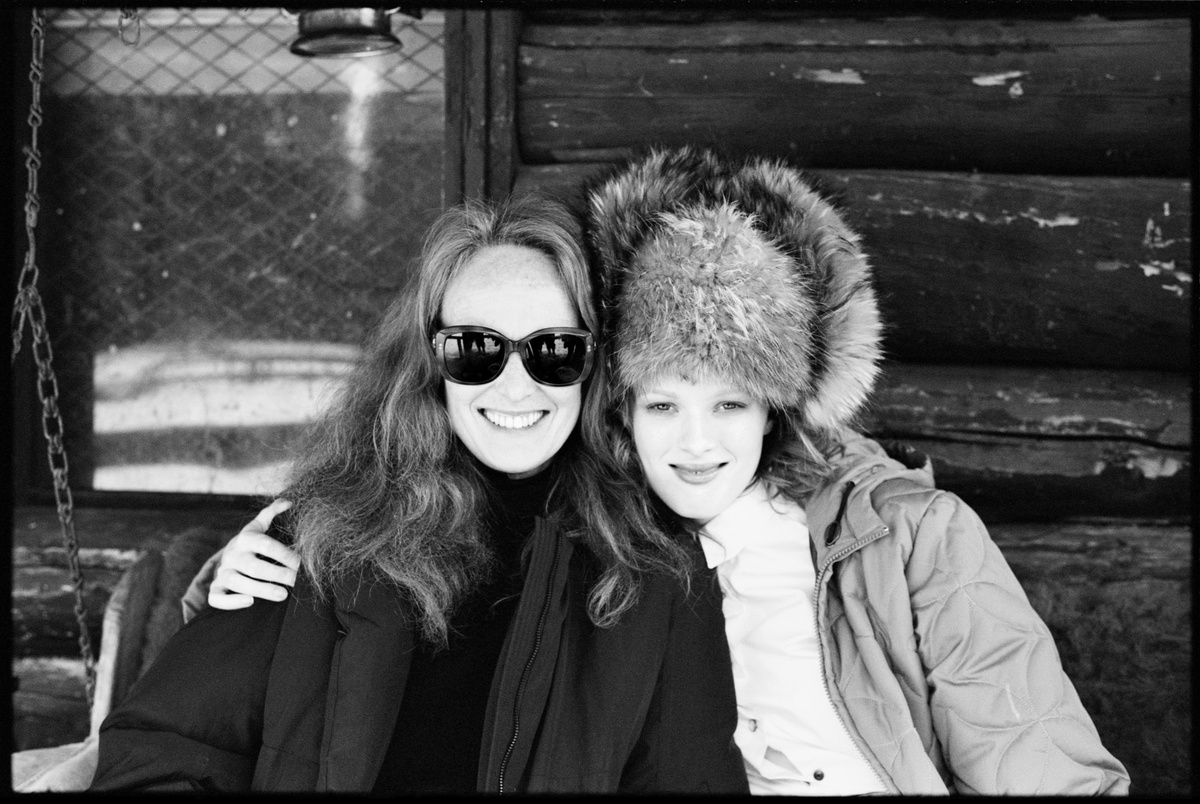
Are there any photographers you wish you had worked with?
I wish I had worked with [Richard] Avedon. I nearly did a few times, both when I was at Calvin Klein and when I was at British Vogue. When I was at British Vogue he asked me to style a commercial with him but then his dates changed and I couldn’t do it.
You’ve done a lot of fun things with Ellen [Von Unwerth] over the years.
Yes, I’ve done wonderful things with Ellen. I love Ellen. And I’ve done great things with Arthur [Elgort], and I love everything I did with Guy Bourdin too. Bourdin was hard, but I kind of liked his twisted mind. Helmut [Newton] was also a struggle. He was always fine with me, but sometimes he used to shut you down. He’d crush you with three words. When I was modelling he used to make the girls cry the whole time, but he never made me cry.
There was a period when photographers would always make the girls cry.
Yes, they used to think that was smart. But it’s not smart, it’s stupid. You’re not going to get the best out of someone if she’s crying!

So what brought the book about?
Everyone said ‘You have to do a memoir.’ I thought, ‘Fuck that. I don’t want everyone knowing everything about my life.’ But then I was pressured into it and I thought, ‘Well, maybe it would be an interesting challenge.’ This was about two years ago. Then it turned into something huge and I got a book deal from Random House.
Can you imagine your life story being turned into a movie?
I can’t, but they can. They want me to talk to people about it but I’ve insisted we get the book done first.
Who would you choose to play you?
That’s such dinner party conversation. I’d choose Julianne Moore, someone like that, and Karen Elson to play me when I was young.
Credits
Interview Terry Jones
Photography Arthur Elgort
Styling Stella Greenspan
Hair colourist Louis Licari
